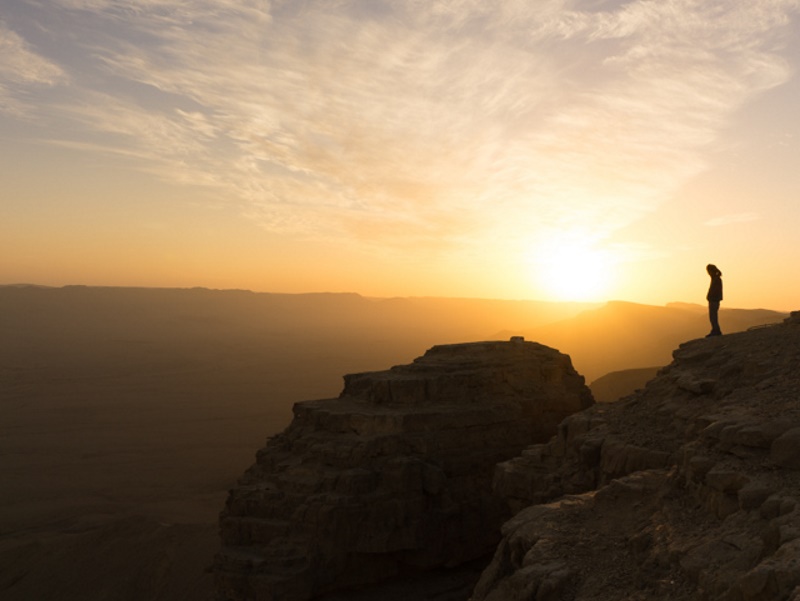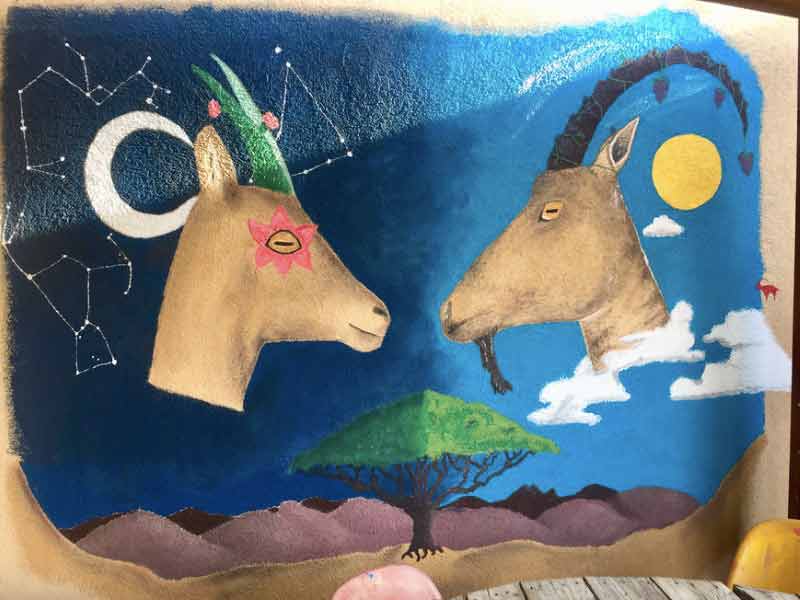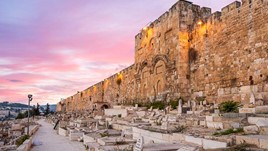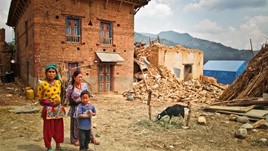
By Elizabeth Whitehead
Travel Writer23 Oct 2018 - 5 Minute Read
I hold up the brush, the bristles wet with brown acrylic. My hand hesitates inches from the wall. There is no turning back after this. I hold my breath as the brush meets stone, gently at first, and then in a long, sweeping stroke.
Israel was the last stop on my year-long trip through Europe. The last month, I had decided to spend somewhere “different.” Impulsively, I applied to volunteer at a hiker’s hostel in the middle of the desert.
Located in the small, isolated town of Mitzpe Ramon, the hostel sits perched on the edge of a giant crater. The crater is encircled by jagged cliffs, like teeth around a mouth suspended open in a wide grin. It’s the only landmark in the Negev for miles; a navel that punctuates the vast, arid belly of the desert.
“Technically it’s not a crater,” says Lee. “It’s a makhtesh.”
She must read the confusion on my face.
“A makhtesh is created by erosion,” she elaborates. “It was hollowed out by the ocean when the desert was underwater millions of years ago.”
Lee owns the hostel. She has asked me, along with another volunteer, Hunter, to create a large mural for the common area.
“I want to do something with this space,” she says, musing over an empty patch of wall.
“Maybe you guys could paint something here?”
I want to leap at the chance. There’s only one problem – I’m bad at drawing. I simply always have been. No matter what I tried, there was always a lopsided strangeness to whatever I drew. I had decided in 7th grade art class that maybe this just wasn’t for me, and I had barely put pencil to paper since.
“What do you want us to paint?” I ask, doubting I’d be able to pull it off in any case.
“Anything you like,” she replies with a shrug, seemingly nonchalant about the most visible wall on her property.
Part of me wants to say no. But I can’t resist the excitement of leaving behind a part of myself in the desert. Despite my shaky confidence, I agree to give it a shot.

That evening, I walk to the edge of the makhtesh to watch the sunset. A large group is gathered at the viewing platform under a sky bruised fiery red. I don’t know what to paint on the wall. I don’t really even know how to paint. But there is richness in the arid plains that stretch around me. And in the fissured earth, I know I will find the inspiration I need.
I watch as a family of Ibex trot past the lip of the crater. The low sun throws the long shadows of their horns on the ground.
There’s a dualism to the desert that I never knew existed until I arrived here. I feel it in the way the placid nights usher in a cool respite from the scorching heat of the day. I see it in the thriving of a lone acacia tree, its sturdy roots gnarled into barren earth. I see it in the stars that emerge nightly over the boundless horizon; tiny granules culminating into a glittering sandstorm frozen in motion. It amazes me to see a sky so full hang over a landscape so sparse.
The sun dips behind the skyline and is swallowed by the jagged mouth of the makhtesh. It seems to be grinning at me.
I return to the hostel and find Hunter piecing together a jigsaw puzzle in the common room.
“I have an idea for the mural,” I tell him.
“What are you thinking?”
“A duality scene.”
After collaborating, sketching, and rearranging, we finally have our mural design. We pencil out the design on the wall and carefully mix our paints. Hesitantly, we put color to our canvas.
We spend the next days talking and scratching our brushes against the coarse wall. We exchange stories and music. Our brush strokes become carefree.
On the afternoon of the third day, we put our brushes down – the mural is complete. It depicts the busts of two Nubian Ibex, a female and male, with desert flowers sprouting from their mighty horns. The finished result is vibrant and colorful, if a little amateur. I smile at Hunter. The floating head motifs look almost like goat deities; if Ibex had their own religion, this scene would probably be part of their mythology. I can’t help but laugh.
“What should we title it?” I ask Hunter.
“The Ibex creation myth?” he jokes.
Anxiety sweeps through me as I see Lee approaching in the distance. What if she doesn’t like it? What if our wacky design has ruined her hostel?
She looks at the mural, pausing for a second before her lips curl into a smile.
“I love it,” she says. “I’ll never take it down.”

Discover similar stories in
connection
Travel Writer
Elizabeth is an Australian travel writer who volunteers around the world in search of wacky adventures and fascinating stories.




No Comments